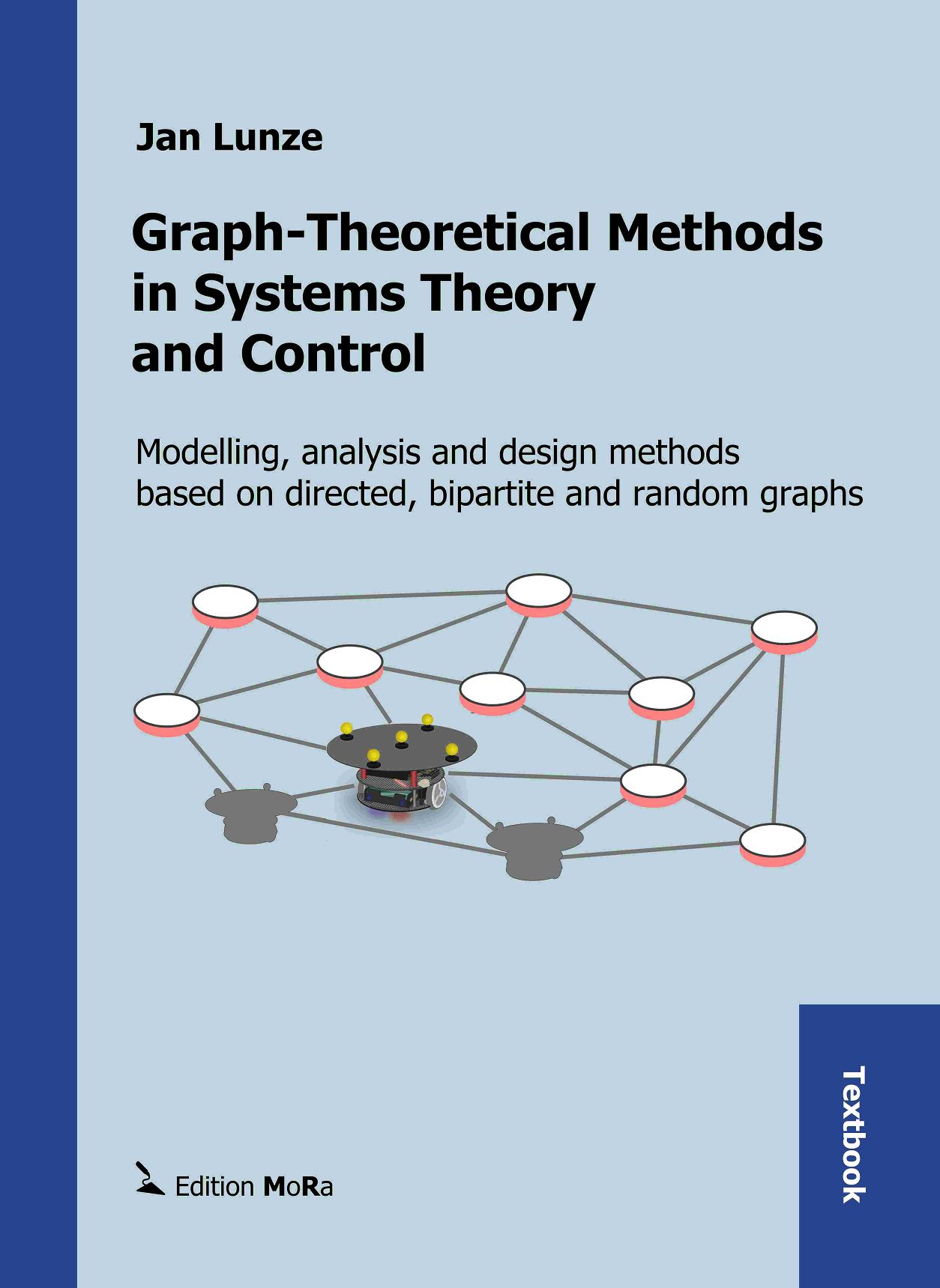Jan Lunze
Graph-Theoretical
Methods
in Systems Theory and Control
Contents
The book is divided into three parts, which distinguish with respect to their graph-theoretical requirements. Within these parts, the graph-theoretical methods and their application to systems analysis and control design are separated by chapters:
- Part I: Graph and graph search
Graph-theoretical methods:
Graph search
Reachability analysis
Algorithm A*
Applications:
Graph search in logic-based knowledge processing: Inference graphs
Graph-theoretical methods for approximate reasoning: ATMS graphs, Bayesian networks
-
Part II - Algebraic graph theory
Graph-theoretical methods:
Graph properties analysed by means of the adjacency matrix
Graph-theoretical interpretation of the determinant and the rank of a matrix
Applications:
Decomposition and aggregation of interconnected systems: coupling graphs
Signal-flow graphs: Mason's formula
Generic properties of linear systems: structure graphs
Graph-theoretical modelling and analysis of electrical networks: circuit graphs
General flow problem: flow networks
Structural analysis of discrete-event systems: automaton graphs
-
Part III - Bipartite graphs and random graphs
Graph-theoretical methods:
DM decomposition of bipartite graphs
Properties of random graphs
Applications:
Structural analysis of constraint sets: bipartite structure graphs
Networked control systems: communication graphs, random coupling graphs
Table of contents
Sample chapter

Additional information
Flyer

